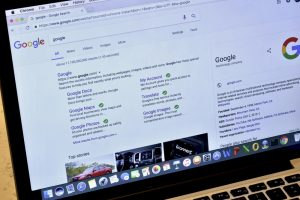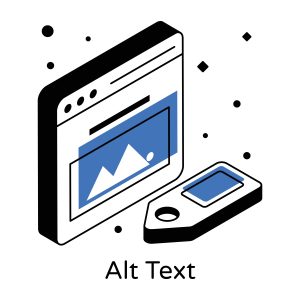The Key to Winning at SEO
Search engine optimization (SEO) is an important aspect of digital marketing, ensuring that your website is visible and ranks well in search engine results. In today’s competitive online landscape, meta tags and HTML tags play a vital role in on-page SEO, helping search engines understand your website’s content and structure.
Whether you’re a business owner, an amateur digital marketer, or someone looking to improve their website’s visibility, understanding these tags is essential. The digital marketing team at Now Media Group will dive into the most important meta tags and HTML tags you need to know and implement for better SEO. To learn more about SEO, call our office at (858) 333-8950 for a free strategy call!
Meta Tags
Meta tags are HTML elements that provide metadata about a web page. They’re invisible to users but are read by search engines and other web crawlers. Here are some of the most important meta tags for SEO:
Title Tag
The title tag is arguably the most important meta tag for SEO. It appears in the browser tab and as the main headline in search engine results. A well-crafted title tag should be concise (ideally under 60 characters), descriptive, and include relevant keywords for the page’s content.
Example:
- <title>Best SEO Practices for Small Businesses | SEO Company</title>
Meta Description
The meta description is a brief summary of the page’s content, typically displayed below the page title in search engine results. While not a direct ranking factor, a compelling meta description can increase click-through rates from search results. Aim for around 155 to 160 characters and include a call-to-action or a compelling reason for users to click through.
Example:
- <meta name=”description” content=” Discover the top SEO practices tailored for small businesses. Boost your online visibility and drive more traffic with our expert tips and strategies.“>
Canonical Tag
The canonical tag is used to prevent duplicate content issues by specifying the preferred version of a page. This is particularly important for websites with multiple URLs leading to the same content (e.g., www.example.com and example.com).
Example:
- <link rel=”canonical” href=”https://www.example.com/blog/seo-tips” />
Robots Meta Tag
The robots meta tag controls how search engine crawlers should interact with a page. It can be used to allow or disallow crawling and indexing of specific pages or sections of your website.
- Example: <meta name=”robots” content=”index, follow” /> (allows crawling and indexing)
Open Graph and Twitter Card Tags
These open graph and Twitter card tags are specifically used for social media sharing. They control how your content appears when shared on platforms like Facebook, Twitter, and LinkedIn, including the title, description, and thumbnail image.
Example (Open Graph):
- <meta property=”og:title” content=”Essential Meta Tags and HTML Tags for Better SEO” />
- <meta property=”og:description” content=”Discover the most important meta tags and HTML tags you need to know for improving your website’s SEO.” />
- <meta property=”og:image” content=”https://www.example.com/blog/seo-tags-thumbnail.jpg” />
HTML Tags
In addition to meta tags, certain HTML tags also play a crucial role in SEO. Here are some essential ones to consider:
Headings (H1, H2, H3, etc.)
Proper heading structure not only helps users navigate your content but also signals its importance and hierarchy to search engines. Use relevant keywords in your headings, with the H1 tag representing the main topic and subsequent headings (H2, H3, etc.) for subtopics.
Example:
- <h1>Essential Meta Tags and HTML Tags for Better SEO</h1>
- <h2>Meta Tags</h2>
- <h3>Title Tag</h3>
Image Alt Text
The alt (alternative) text for images is essential for both accessibility and SEO. It describes the image’s content to search engines and screen readers, helping with image optimization and providing context when images can’t be displayed.
Example:
- <img src=”seo-tags.jpg” alt=”Essential meta tags and HTML tags for better SEO” />
URL Structure and Slugs
Clean, descriptive URLs that include relevant keywords can improve user experience and search engine crawlability. Use hyphens to separate words in your URL slugs (the part after the domain name).
Example:
- https://www.example.com/blog/essential-meta-tags-html-tags-seo
Internal Linking
Internal linking helps search engines understand the structure and hierarchy of your website while also providing users with a better browsing experience. Link to relevant pages within your content using descriptive anchor text.
Example:
- <a href=”/blog/on-page-seo-tips”>On-Page SEO Tips</a>
Best Practices
When implementing meta tags and HTML tags for SEO, it’s important to follow these best practices:
- Conduct thorough keyword research and strategically place relevant keywords in your tags and content.
- Avoid keyword stuffing, as it can harm your rankings and provide a poor user experience.
- Maintain consistency and adhere to industry standards for tag usage and formatting.
- Regularly monitor your website’s performance and update tags as needed to reflect changes in content or SEO strategies.
Unleash Your Website’s Potential with Our SEO Services
Ready to take your website’s SEO to the next level? Implementing the right meta tags and HTML tags is just the beginning. Our team of SEO experts can help you develop a comprehensive strategy tailored to your business goals and target audience.
From keyword research and on-page optimization to link building and technical SEO audits, we’ve got you covered. Don’t miss out on the opportunity to outrank your competitors and drive more qualified traffic to your website.
Contact Now Media Group today at (858) 333-8950 for a free consultation, and let’s unlock your website’s full potential together.
